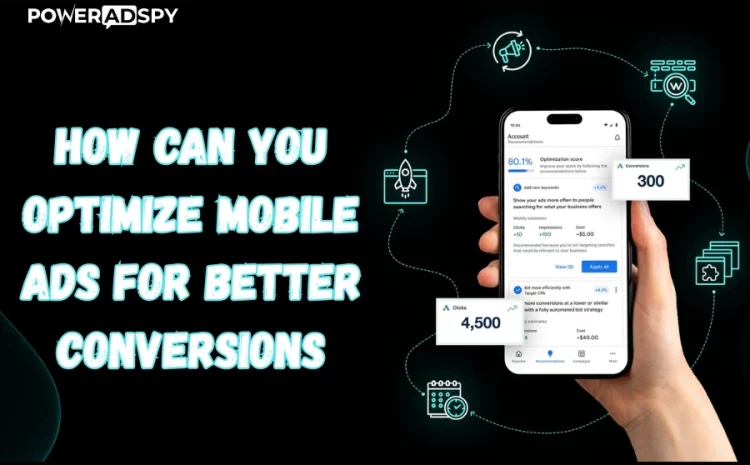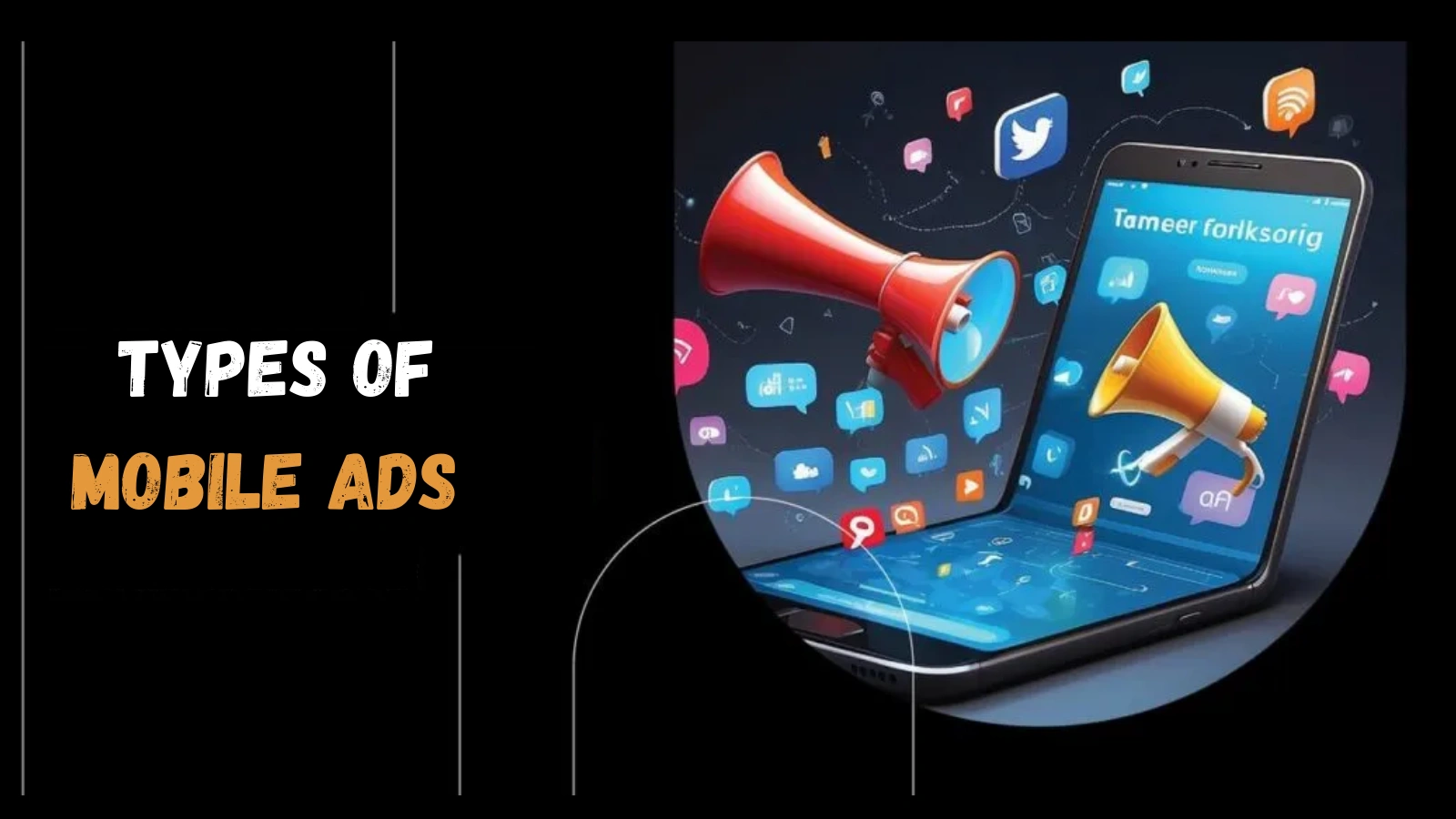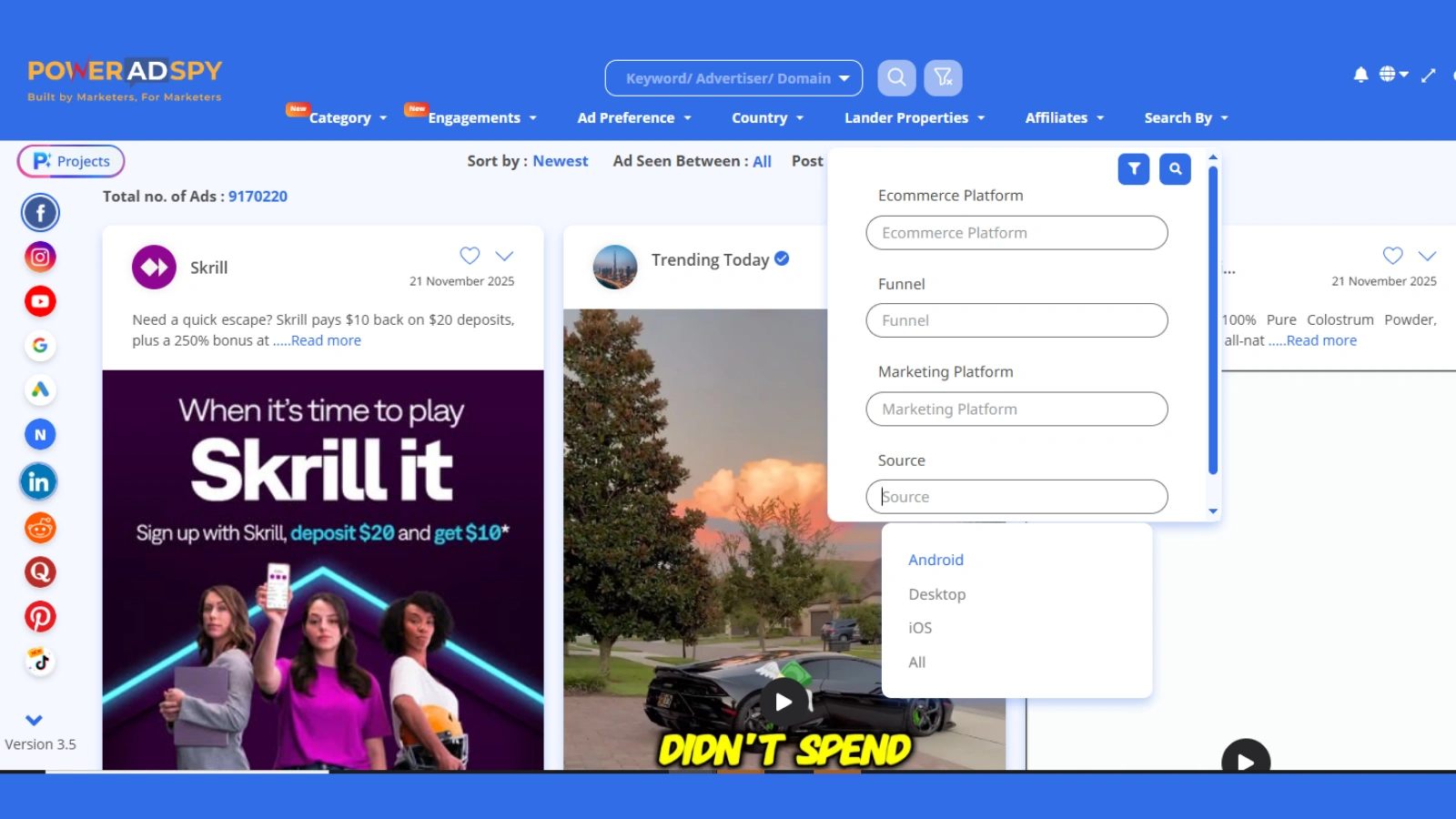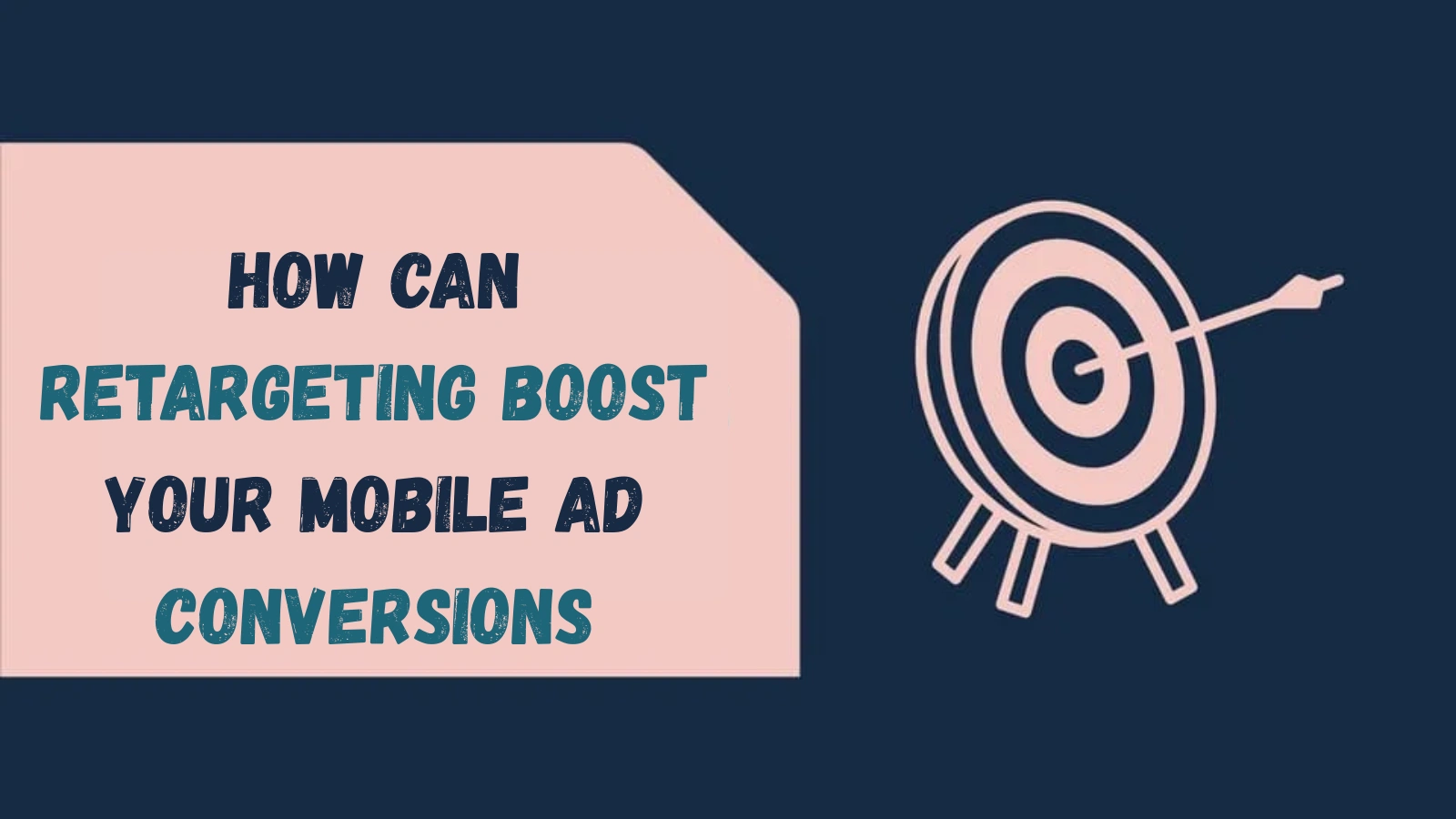How Can You Optimize Mobile Ads For Better Conversions?
If you’re looking to boost your brand’s digital presence, you can’t afford to overlook mobile ads and mobile platforms. These days, most online activities kick off on smartphones—whether it’s shopping, searching, scrolling, comparing, or making purchases. That’s why mobile ads have emerged as one of the most effective marketing strategies for brands, no matter their size.
Mobile advertising isn’t just a trend; it’s a fundamental shift in how customers discover products. With the right approach, brands can boost visibility, increase conversions, and scale profitably. However, many advertisers still struggle to optimize campaigns, choosing the wrong creatives, placements, or targeting.
This blog will walk you through strategies to optimize mobile ads, improve engagement, and scale conversions while spending wisely. Let’s dive deeper.
In a hurry? Listen to the blog instead!
Why Mobile Ads Matter More Than Ever?
Most users check their smartphones multiple times a day. They browse social media, play games, watch videos, and read online content. Every interaction creates a potential conversion opportunity.
Brands that leverage mobile ads see:
- Higher click-through rates
- Faster results
- Better audience reach
- Stronger brand visibility
Unlike desktop users, mobile audiences engage more frequently on-the-go, giving marketers a wider window to influence purchase intent.
How Consumer Behavior Strengthens Mobile Ad Potential?
Consumers today multitask constantly. They scroll while traveling, shop late at night, compare prices instantly, and follow influencers daily. This behavior shifts purchasing power away from traditional advertising and increases overall mobile advertising benefits for brands.
With mobile ads, businesses can:
Deliver Personalized Offers:
Mobile platforms allow brands to use browsing history, interests, and recent actions to show ads that feel relevant. For example, if someone looked at sneakers earlier, they can instantly receive a discount ad tailored to that exact product.
Retarget Easily:
When users abandon carts or leave product pages, mobile ads can remind them to complete the purchase. These subtle nudges significantly increase conversions because the interest already exists.
Leverage Real-Time Trends:
Brands can respond instantly to viral topics, seasonal demand, or sudden spikes in search behavior. With the help of mobile ad intelligence, they can stay timely and visible when audience attention is at its peak.
Scale Across Multiple Apps:
Users switch between apps dozens of times a day, news, social media, games, shopping, and entertainment. Mobile ads allow brands to stay visible across all these touchpoints, increasing brand recall.
Successful campaigns tap into micro-moment marketing, capturing attention when users want something right now, such as searching for food delivery, comparing gadgets, or looking for discount deals.
Also Read:
All You Need To Know About Mobile Ad Intelligence
What Are The Different Types Of Mobile Ads And How Do They Work?
One reason marketers love mobile ads is the flexibility in format. There’s an option for every brand goal, industry, and audience behavior, making mobile one of the most versatile channels in digital advertising.
Some popular examples include:
Display Ads:
These appear on websites, apps, blogs, and within content feeds. They’re ideal for boosting brand visibility and building awareness among users who are passively browsing. Display ads often use compelling visuals to attract quick attention.
Video Ads:
Video ads are perfect for storytelling, product demonstrations, and showing real-life usage. Since mobile users consume short video content daily, these ads can deliver emotional impact and drive stronger engagement.
Carousel Ads:
Carousel ads let advertisers showcase multiple images or products in a single ad frame. They’re useful for eCommerce, allowing brands to highlight features, variations, or bundles while encouraging users to swipe and interact.
Interstitial Ads:
These appear as full-screen ads during app transitions, such as between game levels or page loads. Since users must view or close them before continuing, interstitial ads offer high visibility and increased attention time.
Native Ads:
Native ads seamlessly blend into the platform’s natural content style, making them feel less intrusive. This helps ads appear more authentic, improving user experience and increasing engagement without disrupting browsing flow.
Each format has unique strengths that align with different marketing objectives. Together, these formats represent the most effective types of mobile ads used worldwide to capture attention and drive conversions.
How Can You Create High-Converting Mobile Ads With Targeted Precision?
Crafting successful mobile ads requires a balance of creative impact and strategic targeting. Since mobile users scroll fast, your ad must stand out visually and deliver a message that’s instantly understandable.
A winning mobile ad creative is:
Short and to the point
Visually appealing with strong imagery
Clear in messaging without clutter
Benefit-driven, highlighting value instantly
To improve your creative performance, follow these tips:
Use Bold Headlines:
Strong, concise headlines grab attention immediately and encourage users to read further.
Highlight Product Benefits:
Focus on what the user gains: faster delivery, better savings, improved lifestyle, or convenience.
Add Emotional Triggers:
Words that evoke curiosity, happiness, urgency, or trust can significantly increase engagement.
Include a Compelling Call-to-Action (CTA):
Phrases like “Shop Now,” “Get Offer,” or “Try Free” tell users exactly what to do and build urgency.
Remember, mobile users consume content quickly, so your ads must hook attention within the first few seconds.
Along with strong creatives, audience targeting plays a major role in maximizing conversions. Mobile platforms offer precise targeting capabilities, allowing businesses to reach the right people at the right moment.
You can target audiences based on:
- Age: Deliver relevant products according to generational needs.
- Location: Promote localized offers, services, or events.
- Interests: Match ads with hobbies, lifestyle preferences, or recent activity.
- Search Behavior: Reach users based on keywords they actively look for.
- Device Category: Tailor creatives for Android, iOS, tablets, or high-end devices.
- Purchase Intent: Retarget those who have shown willingness to buy.
Accurate targeting minimizes wasted ad spend and ensures your ads reach users most likely to convert, making your campaigns more profitable and efficient.
Also Read:
Digital Advertising 101: A Crash Course for Beginners
Mobile Ads: Most Effective Advertising Trends In 2024
How Can Strong CTAs In Mobile Ads Drive Quick Action?
Your call-to-action (CTA) plays a crucial role in determining whether a user engages or scrolls away. A strong CTA guides users toward the next step, creating urgency and clarity. When optimized correctly, it can significantly boost click-through rates and conversions.
CTA examples that consistently perform well include:
- Shop Now
- Get Offer
- Save Today
- Claim Discount
These CTAs work because they are action-driven, concise, and focused on user benefit. Always choose wording that aligns with your campaign goal and motivates users instantly on mobile screens.
How Can Competitor Analysis Improve Your Mobile Ad Creative Strategy?
Studying what competitors are doing in the advertising landscape can provide valuable direction for your own campaigns. Instead of guessing trends, competitor research allows you to understand what already resonates with audiences. By examining their approach, you can avoid costly mistakes and learn faster.
Competitor research reveals:
- Trending creatives: Identify current visual styles, formats, and messaging themes performing well across your niche.
- Winning copy concepts: Learn the tone, structure, and emotional triggers that successfully persuade your target audience.
- Effective targeting patterns: Understand how brands position ads for demographics, interests, and intent levels.
- Industry-specific persuasion angles: Spot unique selling points and value propositions other brands use to gain attention.
This is where ad intelligence tools truly shine.
To refine competitor insights, brands often use advanced analytics platforms to discover trending concepts, analyze engagement, and identify what actually works in the market.
Tools like PowerAdSpy allow advertisers to monitor live campaigns, study viral ad structures, and find hidden opportunities. By learning from existing successful mobile ads, brands can optimize their strategies faster, create more relevant creatives, and make data-driven decisions with confidence.
How PowerAdSpy Help You Improve And Optimize Your Mobile Ads Effectively?
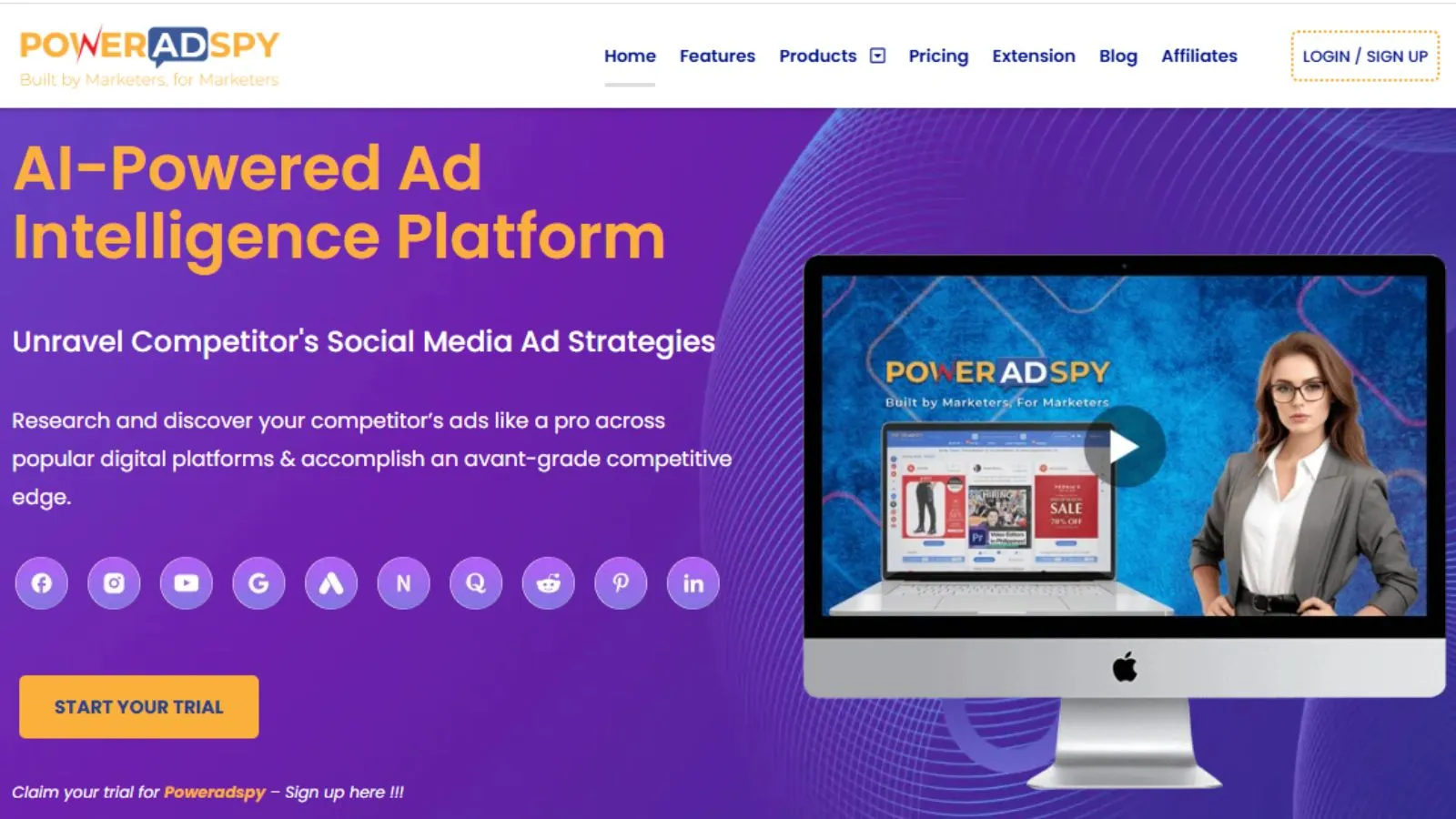
PowerAdSpy is one of the most powerful social ad analytics platforms available. It allows marketers to track competitor ads, analyze performance, and extract proven creative patterns to boost conversions. Let’s explore how it supports mobile advertising success.
Filter Ads by Position:
Not all mobile ad placements deliver the same results. With PowerAdSpy, you can analyze ads placed in news feeds, sidebars, and other locations to identify where your target audience engages the most. This helps you position your creatives more strategically.
Complete Visibility for Better Decisions:
PowerAdSpy lets you open live ad posts directly, giving you real-time access to engagement metrics like comments, likes, and shares. This clarity helps you understand what audiences genuinely react to and replicate successful engagement patterns.
Also, under the Lander properties, you can opt for the Source section. There, you can select the particular device type (Android/iOS) for which the ads are targeted.
Massive Ad Database From 100+ Countries:
With millions of ads collected from around the world, you can discover trending creative styles and concepts before your competitors. This global exposure supports faster creative inspiration and stronger campaign planning.
Narrow Search Filters for Precision:
Search ads based on keywords, advertiser names, or competitor domains. This saves hours of manual research and ensures you find highly relevant ad ideas that fit your niche and audience.
Discover Trending Image & Video Ads:
Since mobile users engage heavily with visual content, PowerAdSpy’s large catalog of image and video ads helps you understand which formats drive views, clicks, and conversions, and even lets you download examples for reference.
GEO-Targeted Insights:
Identify the regions where competitor ads perform best. This helps you uncover profitable markets, refine audience targeting, and allocate budgets more efficiently without guesswork.
Overall, PowerAdSpy reduces creative risk, accelerates research time, and gives brands the competitive intelligence they need to produce mobile ads that convert consistently
What Are the Most Effective Mobile Ad Budgeting Strategies?
Budget planning plays a crucial role in the success of your mobile ads. Poor budgeting can drain resources quickly, while smart allocation can maximize return on investment and scale campaigns sustainably. To manage your ad spend effectively, keep these strategies in mind:
Start Small:
Begin with a modest budget to test how well your ads perform. This allows you to gather performance data before investing heavily, reducing unnecessary risk.
Test Audiences Before Scaling:
Instead of targeting everyone, run smaller tests on multiple audience groups. Identify which segments respond best, then scale only the high-performing groups.
Shift Budget Toward Top-Performing Creatives:
Monitor engagement and conversion metrics closely. Once a creative shows strong results, allocate more budget to it while phasing out weaker ads.
Avoid Overspending on Cold Traffic Initially:
Cold audiences require more nurturing. Gradually move them through awareness and engagement stages rather than pushing hard sales from the beginning.
Continuously Monitor KPIs:
Track key metrics like CPC, CTR, and conversion rates. Regular monitoring ensures you adjust spending before losses escalate.
Smart budgeting minimizes loss, maximizes ROI, and ensures your mobile ad campaigns grow profitably over time.
How Can Retargeting Boost Your Mobile Ad Conversions?
Retargeting is one of the most profitable mobile advertising approaches because the audience has already shown interest in your brand. These users may have:
- Viewed product pages
- Added items to their cart
- Clicked existing ads
By re-engaging them, retargeting reminds potential customers to complete their actions, dramatically increasing conversions and reducing wasted traffic.
Mobile Advertising Examples That Inspire
Successful campaigns often include:
- Story-driven UGC videos
- Short product demos
- Relatable humor
- Customer testimonials
Studying mobile advertising examples helps marketers understand why certain styles succeed.
How Do Ad Spy Tools And In-App Advertising Boost Mobile Ad Results?
One of the biggest challenges in mobile advertising is overcoming creative blocks and gaining visibility into what competitors are doing right. Ad spy tools make this easier by revealing viral ad concepts, high-performing formats, trending engagement patterns, and real-world persuasive angles. This eliminates guesswork and helps marketers build campaigns backed by proven data—not assumptions.
At the same time, in-app mobile ads offer a hidden conversion advantage. Because users are already actively engaged within gaming, fitness, finance, or music apps, they are more receptive to branded messages. This focused attention often translates into higher click-through rates, stronger brand recall, and more conversions compared to general mobile placements.
Together, competitive insights and high-engagement environments give marketers a strategic edge in improving mobile ad performance.
Social Media + Mobile Ads = Perfect Pair
Platforms like:
- Facebook
- Instagram
- YouTube
- TikTok
dominate mobile screen time, making them ideal for brand promotions.
Final Thoughts
As user attention continues shifting toward mobile screens, ignoring mobile ads means missing out on massive growth. But success requires careful optimization, compelling creatives, and data-driven insights.
Competitor analysis tools like PowerAdSpy simplify the entire process, helping brands spot trends instantly, monitor engagement, filter creative styles, and develop campaigns that convert consistently.
By combining:
Smart targeting
Strong CTAs
Adaptive creatives
Fast landing pages
Trend awareness
you can create powerful mobile campaigns that scale rapidly and profitably.
Mobile advertising continues evolving, and staying ahead requires both creativity and intelligence. Start optimizing today, analyze continuously, and keep evolving your strategies to remain relevant in the competitive digital landscape.
FAQs
1. How long should a typical mobile ad run before optimizing it?
Most marketers tend to review and tweak their mobile ads after about 5 to 7 days. This timeframe can vary based on impressions, clicks, and conversion signals. Making early adjustments helps avoid wasting your budget.
2. Do different mobile ad placements affect conversion rates?
Absolutely! The placement of your ads—whether in stories, in-feed, or within apps—can lead to varying levels of engagement. Testing each option is key to figuring out where your audience is most responsive.
3. Does ad frequency impact user experience on mobile devices?
Definitely. If users see the same ad too frequently, it can lead to fatigue and a drop in engagement. Striking a balance in ad frequency keeps users interested without overwhelming them.

